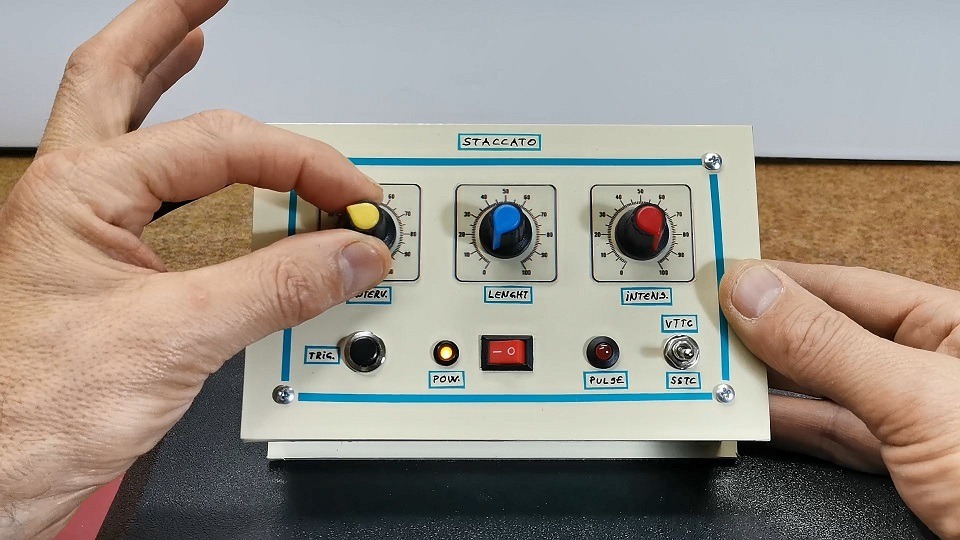DIY “Staccato” controller drives Tesla coils

The Tesla coil, patented by legendary inventor Nikola Tesla in 1891, is a kind of resonant transformer circuit capable of producing sparks of high-voltage alternating-current electricity. They don’t have many practical uses today beyond novelty, but they were commonly used in spark-gap radio transmitters in the early 20th century. The sparks generated by a Tesla coil would emit strong bursts of radio waves and operators could encode information through patterns of pulses, similar to a wired telegraph. But those sparks are difficult to control, which is why Mirko Pavleski designed this Arduino-based “staccato” controller for Tesla coils.
The purpose of Pavleski’s device is to gain better control over a Tesla coil, with the goal of generating longer sparks with less power. It does so by providing very granular control over the length of each pulse, its intensity, and the interval between pulses. A Tesla coil requires a lot of voltage to create a spark, but very little current. That means that the total power needed to produce a spark is minimal and relatively safe to oversee with a microcontroller.

In this case, Pavleski used an Arduino Nano to manage the circuit. A control panel lets the user adjust the parameters, then the Arduino does the rest. Power comes in from mains via a 12V transformer and the Arduino controls the current going from that to the Tesla coil with a standard triac, with a large capacitor providing some filtering. Almost everything else comes down to the Arduino’s programming, which ultimately determines the characteristics of the electricity supplied to the Tesla coil. Because that’s going through a triac, the Arduino can “dim” the voltage, as opposed to simply toggling it like a relay would.
This will let Pavleski perform more in-depth experiments with Tesla coils.